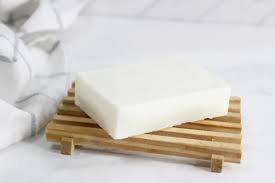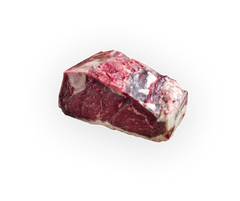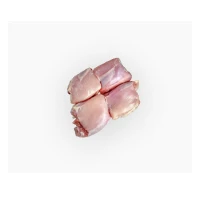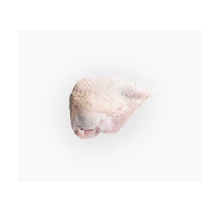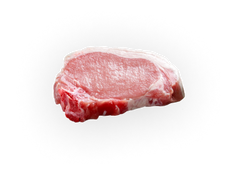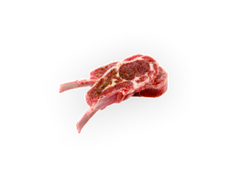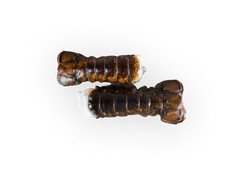Beef tallow, once a staple in kitchens around the world, is enjoying a resurgence in popularity. For many years, it was overshadowed by vegetable oils and margarine, which were marketed as healthier alternatives. However, with growing interest in traditional cooking methods, nutrient-dense fats, and sustainable food practices, beef tallow is making a comeback. This rendered fat from beef has numerous uses, from cooking and skincare to candles and leather care. In this blog post, we’ll explore the many ways beef tallow can be used, highlighting its versatility and benefits.
---
1. Cooking and Frying
One of the most well-known uses of beef tallow is in cooking and frying. Tallow has a high smoke point—around 400°F (204°C)—which makes it ideal for high-temperature cooking like frying and sautéing. Unlike vegetable oils that can break down into unhealthy compounds when overheated, beef tallow remains stable at high temperatures. This makes it an excellent choice for deep-frying potatoes, chicken, or other foods that require high heat.
Beef tallow also imparts a rich, savory flavour to food, which is why it’s been a popular fat in traditional recipes like French fries, fried chicken, and even in some baked goods. It’s especially favoured in certain culinary traditions like Mexican cuisine, where it’s used in making flavourful tamales or refried beans.
In addition to frying, tallow can also be used in baking. It can replace butter or vegetable oil in recipes for biscuits, pie crusts, or pastries. The result is often a flakier, richer texture, thanks to the unique properties of the fat.
---
2. Nutrient-Dense Cooking Fat
Beef tallow is not just a versatile fat, but it also offers a host of health benefits when consumed in moderation. It’s a good source of monounsaturated fats, which are known to be heart-healthy. Additionally, tallow contains essential fat-soluble vitamins like vitamin A, D, E, and K, which are crucial for maintaining healthy skin, bone health, and immune function. The presence of conjugated linoleic acid (CLA) in grass-fed beef tallow, in particular, has been linked to various health benefits, including improved fat metabolism and reduced inflammation.
Unlike highly processed vegetable oils, which are often refined and stripped of nutrients, beef tallow is a more natural option that’s minimally processed, especially when sourced from grass-fed beef. This means it retains more of its nutrients and is less likely to contain harmful trans fats or other additives commonly found in processed oils.
---
3. Skincare and Beauty Products
Beef tallow has long been used in skincare for its moisturizing and healing properties. It is rich in fatty acids like oleic and palmitic acids, which are similar to the natural oils found in human skin. This makes tallow a deeply nourishing option for dry or damaged skin. It also contains vitamins A and D, which promote skin regeneration and repair.
In fact, tallow has been used historically in the creation of soaps, balms, and lotions. Because of its ability to form a barrier on the skin, tallow-based skincare products help lock in moisture and protect the skin from environmental stressors. For those with sensitive skin or conditions like eczema, tallow can be especially soothing, as it is gentle and non-irritating. Additionally, tallow’s anti-inflammatory properties can aid in calming irritated skin and supporting its natural healing processes.
Many people are now turning to tallow-based products in the form of homemade soaps, lip balms, and body butters. Whether you buy pre-made tallow products or make your own, this fat is a great addition to your skincare routine.
---
4. Beef Tallow Candles
One of the lesser-known uses of beef tallow is in candle making. Tallow was used for centuries to make candles before the advent of modern paraffin and synthetic waxes. Because tallow burns with a clean, long-lasting flame, it’s a sustainable and eco-friendly alternative to store-bought candles. Making your own tallow candles is simple and can be done using leftover beef fat from cooking or purchased tallow.
To make tallow candles, you’ll need to melt the fat, strain it to remove any impurities, and then pour it into a mold with a wick. Once cooled, the tallow solidifies into a dense, durable candle. Tallow candles emit a warm, soft light and can burn for hours without releasing harmful chemicals into the air. They are a great addition to any home, especially if you’re interested in more natural, sustainable products.
---
5. Leather Care
Beef tallow has been used for centuries as a natural conditioner for leather goods. The fat helps to soften and protect leather, preventing it from drying out or cracking. Tallow can be used on leather boots, belts, saddles, jackets, and other items to preserve their texture and longevity. To condition leather with tallow, simply rub a small amount into the leather and buff it with a soft cloth. This helps to nourish the leather, restore its natural oils, and keep it supple.
Using beef tallow for leather care is an excellent alternative to synthetic leather conditioners that may contain harsh chemicals. Additionally, because tallow is a byproduct of beef, it’s a sustainable choice for maintaining leather products, especially for those interested in reducing their environmental footprint.
---
6. Pet Care
Beef tallow can also be beneficial for pets. For example, if you have a dog with dry or cracked paws, a tallow-based balm can be applied to soothe and moisturize their paw pads. Just like with human skin, tallow helps to protect and nourish the skin, making it a useful ingredient in pet grooming products. Additionally, tallow can be used as a supplement in your pet’s diet, especially if you’re feeding them a raw food or ancestral diet. It’s a good source of healthy fats and can provide essential nutrients for your pet’s coat, skin, and overall health.
Some pet owners even use tallow as a base for making homemade treats or dog foods. The rich, fatty composition of tallow can be a useful addition to your pet’s diet in moderation, providing both energy and nutrients.
---
7. Traditional Soap Making
Another traditional use of beef tallow is in soap making. The fatty acids in tallow are excellent for creating lather and giving soap a hard, long-lasting texture. Homemade tallow soap is free from synthetic chemicals and fragrances that can be irritating to the skin, making it an ideal choice for people with sensitive skin. Tallow-based soaps also tend to be more moisturizing than many store-bought alternatives.
Making tallow soap involves rendering the fat, mixing it with an alkali like lye, and allowing the soap to cure. Many people who practice natural or homesteading lifestyles enjoy making their own tallow soap, as it’s a cost-effective and sustainable option.
---
Beef tallow may have been forgotten for a time, but it is reclaiming its place in modern kitchens, beauty routines, and beyond. From cooking and frying to skincare, leather care, and even candle making, tallow is an incredibly versatile and nutrient-dense fat that can be used in a multitude of ways. Whether you're interested in traditional, sustainable practices or simply looking for a high-quality fat for your cooking, beef tallow is worth considering.
By returning to this age-old product, we not only embrace a more natural way of living but also support more sustainable practices in our food choices and everyday life. So, the next time you’re cooking a meal or looking for a skincare solution, consider reaching for this timeless and multipurpose fat.
The Many Uses of Beef Tallow: A Versatile and Nutrient-Dense Fat
